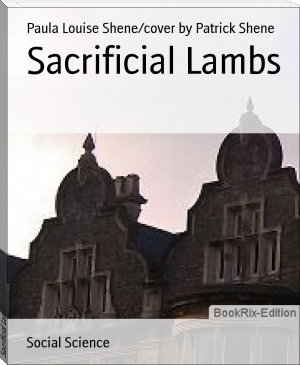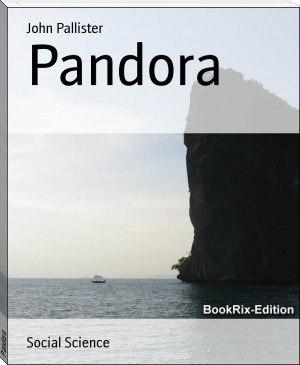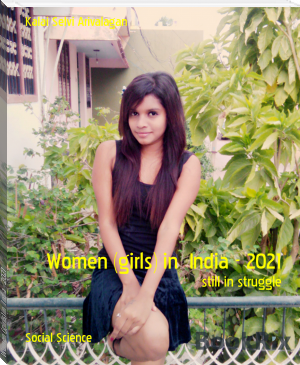Musicfestivals as an example for masstourism - Are departies a classical example for masstourism? - Alexander Prötzsch (best desktop ebook reader TXT) 📗

- Author: Alexander Prötzsch
Book online «Musicfestivals as an example for masstourism - Are departies a classical example for masstourism? - Alexander Prötzsch (best desktop ebook reader TXT) 📗». Author Alexander Prötzsch
When you think of mass tourism, most of the time you imagine a huge crowd of people in one place blocking the streets and taking pictures of almost everything. But is this imagination the only example for mass tourism? Mass tourism is a phenomenon that’s taking part in the modern world. Huge groups are traveling to certain places. This causes many advantages and disadvantages. The environmental issue is just one of them. Other disadvantages are causing different problems, such as overcrowding tourist places. The focus of this term paper should be on mass tourism. With special attention to music festivals compared to departies. Those two types of travel where chosen because they have much in common but they are divided in interesting points. Those points are supposed to be compared with each other under the question: are departies a classical example for mass tourism?
For this purpose, a definition for each of the terms should be made first. In addition to that, it should be cleared when science began to speak of mass tourism. In the further course of this term paper, the music festivals will be discussed and presented in detail, followed by their history and their impact or influence on society. For this the music festivals Wacken Open Air and the Sziget festival are taken as examples.
In order to continue the discussion stringently, this term paper is structured chronologically, starting with historical aspects of tourism itself and the beginnings of mass tourism to its present understanding.
1.1 The FestivalsFestivals are common for many activities. Furthermore, does a huge amount of festivals exist in the world because series of concerts or cultural programs like theater or food markets are called festival too (Nagy 2013). Those are usually limited events. In this case music festivals are most important. That’s why the following paragraph presents the festivals which will be compared later on.
1.1.1 Wacken Open Air W:O:AThe Wacken Open Air festival is a music festival, that’s taking part every year on the first weekend in august. In this year 2019 it’s having the 30th anniversary. The first edition took part 1990. Over the years it has grown to one of the biggest music festivals in Germany. Furthermore, it is known to be the biggest heavy metal festival in the world. During three days many bands are presenting their repertoire. The W:O:A, Wacken Open Air, starts at Wednesday with a warming up program and the main stages are opened on Thursday. Every year Wacken has around 80.000 music enthusiast visiting the festival. The W:O:A is since 2007 sold out almost every year. (https://www.wacken.com/de/alle-infos/historie/) To keep the festivalground clean, the authorities from Wacken started the campaign; " Metalheads for nature".
1.1.2 Sziget FestivalThe Sziget festival is one of the biggest music festivals in Europe. Sziget is placed on the Òbuda-island in Budapest and takes place every year in August. The first edition took part in 1993 under the motto:”we need one week together”. First it was named Pepsi Sziget, from 1996 to 2001. Than in 2002 the festival got named Sziget Festival. It is visited by around 400.000 people. In the beginning it was a smiple rock and alternative festival. But now it’s presenting almost every music genre, from heavy metal to dubstep and it is hosting the most famous musicians to a huge audience (Nagy 2013). The Sziget festival efforts to be a green festival and promotes a lot of enviromental friendly products and activites on the festival.
2. ComparisonAfter the introduction of the two festivals, should mass tourism be in the focus. Therefore a few questions need to be answered. What is mass tourism? As well as: What are the impacts of mass tourism e.g. on the environment?
In this paragraph the complex term of mass tourism should be defined. What is mass tourism? When mass tourism is a topic, normally most of the people think about huge groups in small touristic places like Venice. Furthermore the common picture of mass tourism is connected to groups of Asian people visiting Europe. In Anna Pollocks article the negative aspects of mass tourism were listed. She argued with the environmental aspect, in which the tourists are producing higher cost for the foreign civilization and destroying the environment. Cheap flights and no or low taxes for airlines producing carbon dioxide are speeding up the climate change. Another point that’s boosting the tourism industry is that the industry declares traveling as a right. Especially that cheap travel is nowadays a right and no longer a privilege (Pollock 2013). That describes mass tourism as a right for the community. Plus the tourism is boosted because of low prices, which is causing more and more people are going on vacation more often. Mostly the chosen destinations are similar, that’s engaging many tourists in limited space.
After the definition of mass tourism and a few presented negative aspects, the term departies should be defined. This paragraph will focus on explaining, what departies are with the definition of Fjær and Tutenges. They say that departies have five dimensions. Furthermore are these events called departies because they are constructed from a distance to the normal lifes of the paricipants. Those five dimensions are spatially, temporally, morally, stylistically and experientally. Locations that are spatially are known for excess and opportunities. Such as party islands or cities like Mallorca or Las Vegas which are known for unlimited opportunities. The temporal aspect describes that those events are only taking place for a limited amount of time. The moral dimension focuses on the activities, that are mostly described as immoral, not good seen in the society or maybe illegal. With the stylistically aspect the dresses and consumption during those events are described. The last dimension the experientally one, is for the generated experiences during those events. The traditional given example is the time of spring break. During spring break holidays in the US, students are traveling to Mexico or Florida. Their goal is to celebrate the past semester and a good time without feeling guilty. Those guilt feelings would appear by reacting as immorally as most of them do during those holidays. (Fjær,Tutenges 2016).
In the following paragraph the two festivals will be discussed and compared under the five dimensions of departies. To have a better view on the comparison, the festivals will be compared in the following table.
The five dimensions
Wacken Open Air
Sziget Festival
spatially
The W:O:A is known for the huge parties on the campground and in front of the stages. Furthermore, the village Wacken and the festival ground are called holy ground Wacken, which is the best example for the special identity of the location. A common phrase during the festival is, that Wacken is only once a year.
The Sziget is known as well as a huge party with many concerts and other activities. The wide ranges of activities that are offered to the visitors make clear that the Sziget is something special. Furthermore it is separated from the normal society because it takes place on an island in the middle of Budapest.
temporally
The temporally aspect of a music festival is the aspect which doesn’t need a detailed explanation. Festivals are normally taking place for a short amount of time. The W:O:A for example takes place every year on the first weekend of august, from Wednesday to Saturday evening. But the visitors have the ability to arrive from Monday and depart on Sunday. That the maximum length of W:O:A is limited to one entire week.
The sziget festival is a bit different to the W:O:A because it is bigger and lasts longer. The concerts and activities taking place during seven days and the visitor has the ability to choose; how long he or she might stay there.
morally
The moral aspect describes the behavior during the festival, which is different to the behavior in the daily life. On the W:O:A most of the visitors are massively consuming alcohol, listening to music all day long and sleep only a few hours. In everyday life this would be impossible.
During the Sziget the visitors are traveling into a different world, where they have the ability to participate in different activities. Even though that alcohol is prohibited at this festival, the visitors might have solutions for participating immoral activities, those might be impossible in everyday life too.
stylistically
The standard clothes seen on the Wacken Open Air are mostly black t-shirts with the favorite band on, black jeans or short trousers, a vest with patches and symbols from the bands. Sometimes it is possible to spot some people wearing pink shirts or costumes, but most of the visitors are wearing all black because that color is connected to the music genre of metal.
On the Sziget it is a bit different because the festival is not only for one music genre. That there participates almost every genre causes a great diversity in the worn clothes.
experientally
During the festival the





Comments (0)